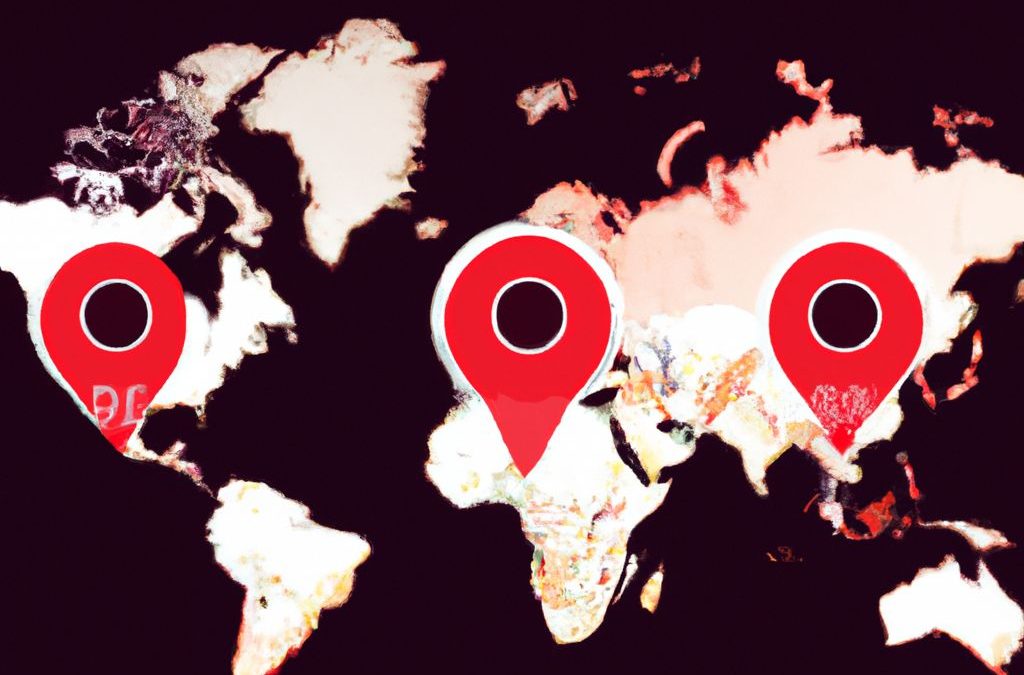Understanding Geotargeting in Advertising Monetization
Geotargeting in Advertising Monetization is like having a GPS. It’ll help you precisely show ads to users based on their geographic location. This technique makes sure your ads reach the right people and are more likely to be engaged with.
Analyze your audience’s interests and demographics first. This’ll give you insight into their behavior and the areas they’re based in.
- Choose platforms that offer this feature as not all do.
- Then plan an effective campaign with a personalized message tailored to your location.
Importance of Geotargeting in Advertising Monetization
Geotargeting is essential for advertising monetization. It lets companies show ads based on the user’s location. This way, organizations can show their intended audience personalized and relevant ads. This increases engagement rates, ROI and revenues.
By using Geotargeting, businesses can gain useful insights into how consumers behave in certain places. This information can be used to adjust marketing strategies and create messages that fit local needs.
Businesses should also remember to be mindful of the practical implications of using Geotargeting. For instance, they need to make sure their data collection is GDPR compliant and follows ethical standards. So, it’s vital to get the balance between personalization and privacy right.
Pro Tip: Geotargeting is becoming commonplace online. So, businesses must keep up with the latest developments and technologies to remain competitive.
Targeting the right audience with geotargeting is like playing darts – and who doesn’t enjoy a good game?
4 Steps to Use Geotargeting for Advertising Monetization
To use geotargeting for advertising monetization successfully, you need to follow these four steps: Identifying your target audience, choosing the right ad format, creating ad content, and setting geotargeting parameters. By completing these steps, you can ensure that your ads are reaching the right audience at the right time with the right message, maximizing your advertising revenue.
Identifying Target Audience
Identify your audience. Know their requirements, age, location, and interests to catch their eye. Use tools to monitor their browsing. Analyze demographics data for demographic-specific campaigns for better monetization.
Geotargeting allows you to customize ads for clients in certain places. Research high-potential locations and understand their culture, language, and buying habits. Incorporate these details into your campaigns for optimal engagement.
Focus on multiple cultures when targeting multiple locations. Language preferences and color schemes can make a big difference in engagement for certain demographics.
Remember to understand your target audience before launching any digital campaign. This helps create content they can relate to without being overbearing. The right ad format can make the difference between a click and a skip.
Choosing the Right Ad Format
Choosing the right ad format is vital for any advertising campaign’s success. It’s essential to pick the right type that fits your campaign and audience. Here are six points to consider while selecting a suitable ad format:
- What is the goal of your ad campaign?
- Does the ad format fit your message?
- Who is your audience and where do they spend time online?
- Can you be creative?
- Know the limitations of each ad format.
- Test multiple formats and compare results.
Different ad formats have various levels of efficiency based on your goals. It can be tricky to pick the right one, but by following these six steps, you’ll make an informed decision.
Make sure the ad format aligns with your customer’s needs and preferences. This will help you connect with them personally, and boost your campaign’s performance.
Once, an agency wanted to raise awareness for a beach-facing property. They used Facebook Ads, which gave them flexibility in terms of ad formats. They tested image carousels, video ads and testimonials. The result was amazing – they got immense interest through geotagging and increased sales inquiries significantly.
Follow these tips to create ads that even your mother-in-law can’t ignore.
Creating Ad Content
Ad content is key for successful advertising monetization. To get it right, it must be crafted carefully with attention to detail. It must be unique, creative, and persuasive. Plus, local info is a must.
For success, research the target audience. Understand their preferences and needs. Then, tailor advertisements to these interests while promoting businesses or products.
Structuring ad content correctly is important too. Use high-quality graphics and compelling images. A persuasive tone is key for grabbing consumers’ attention and making them more likely to buy. Also, highlight what makes you unique and how it can help customers.
Pro tip: Include engaging Call-to-Action phrases! Location keywords? Yes! This increases the chances of reaching potential customers in the area and boosts conversion rates. Geotargeting like a pro ensures ads hit their mark!
Setting Geotargeting Parameters
As an advertiser, geotargeting is key for boosting revenue by hitting the right crowd. Here’s a guide to help ace it:
- Investigate the Audience: Analyze the target market’s preferences and demographics in varying places with analytics tools.
- Set Parameters: Use data from step one to establish targeting criteria such as location, behavior, interests, and devices.
- Put Plan Into Action: Adapt ads to each region’s needs and values. Personalize messaging based on user data collected earlier.
Geotargeting has been a major part of advertising since long before digital times. Geolocation dates back centuries; map makers drew territories to differentiate regions. Advertisements then weren’t like today, yet they still helped people recognize their environment. Make your adverts hit the mark with these best practices for geotargeting – nothing says ‘I’m watching you’ quite like personalized ads.
Best Practices for Geotargeting in Advertising Monetization
Geotargeting is a great way to get the most out of your advertising money. It means optimizing ads for certain areas. To do this, research the target audience in each region. Learn their preferences, culture, and language.
Think about how location, weather, and time zones might influence their response to your ad. E.g., a winter gear ad would work better in a cold region during winter.
Remember to review your geotargeting strategy from time to time. Audience preferences and behaviors change. Geotargeting is the key to making your ads more relevant than your ex’s texts!
Case Studies of Successful Geotargeting in Advertising Monetization
Curious for success stories of using geotargeting in monetization? Let’s explore some real-world examples.
- Burger King targeted customers nearby and saw a 30% app download growth, plus more in-store visits.
- HotelTonight used location data to provide last-minute deals which boosted bookings by 300%.
- Targeted ads are not only more effective but appear like personalized offers to users. Geotargeting is an important part of the monetization strategy.
- Toyota also tried dynamic, location-driven campaigns and saw a 25% jump in click-through rates!
- Three Day Blinds used geodata analysis to craft local messaging which led to seven times ROAS.
- Dentsu Aegis Network reported that its clients with retail businesses showed increasing interest in geolocation tools. It’s clear that targeting is key to monetization, as it helps hit the targets for impact and revenue.
- The Value Of Internal Linking to SEO and Revenue - August 12, 2023
- How To Evaluate Your Site Revenue per Thousand (RPM) - August 10, 2023
- Understanding the Role of Ad Verification in Advertising Monetization - August 8, 2023











